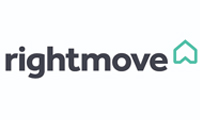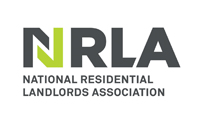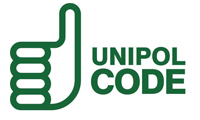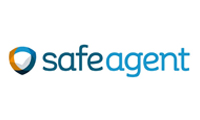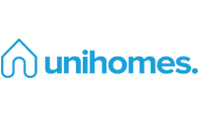Key Trends in Student Housing, University Fees, and Demographics: Insights from Unipol Housing
15th January 2025
At a recent Unipol Housing meeting, key trends in student housing, university fees, and student demographics were discussed, shedding light on the challenges facing students, landlords and universities in Leeds and across the UK.
University Fees: A Financial Strain
The increase in university fees to a maximum of £9,535 has raised concerns. While this increase may help offset some rising costs, it is still not enough to alleviate the financial pressures faced by universities, particularly smaller institutions. While higher-tier universities like those in the Russell Group may remain largely unaffected, universities outside this group, especially lower tariff universities, are struggling with financial sustainability. The increase in employer National Insurance contributions compounds these financial pressures. Students feel the fee hike is unjust, especially given the ongoing cost-of-living crisis. With little change expected in funding from the Labour Party, substantial reforms seem unlikely in the near future.
Student Maintenance Loans: Below Inflation Increase
Alongside rising tuition fees, the increase in student maintenance loans has failed to keep up with inflation, leaving students with a widening financial gap. This is particularly acute in cities like Leeds, where rent prices are climbing. The average rent for off-street housing is £135 per person per week, including bills (pppw), while halls of residence cost £175 pppw. Many students are facing increased financial hardship as a result. Understanding your rent can help you navigate these challenges.
Leeds Student Housing Market: Supply and Demand
The housing market in Leeds has experienced mixed trends. While there has been a significant increase in demand for student accommodation (400-600 additional students), the supply of off-street housing is constrained due to planning restrictions (article 4). However, Private Purpose-Built Student Accommodation (PBSA) has grown, with 1,823 new bed spaces, mostly in studio apartments, and plans for another 3,382 beds. Construction costs may limit some of these projects. In addition, Build-to-Rent (BTR) developments are becoming more popular, although student occupancy rates for these developments remain low, ranging from 10-40% depending on the city.
Trends in Student Demographics: Local and International
Nationally, the number of 18-year-olds accepted into universities has increased, with a notable rise in students from disadvantaged backgrounds. The overall number of undergraduate applicants accepted has risen by 2.5%, although the growth is uneven across different types of institutions. The acceptance rates by tariff group universities show the following trends:
- Higher tariff universities saw an increase of 20.4% in acceptances from 2015 to 2024, with a 7.4% rise in 2023-2024.
- Medium tariff universities had an 8.4% increase in acceptances from 2016 to 2024, with a smaller rise of 0.8% in 2023-2024.
- Lower tariff universities experienced a decline of 4.9% in acceptances from 2016 to 2024, with a further drop of 1.4% in 2023-2024.
There has also been an increase in mature student applications. However, stricter visa controls have decreased international student numbers, particularly around dependents. The numbers are still higher than before the pandemic. Also, there has been a pent-up demand from international students eager to return to study abroad post-pandemic.
This has impacted international applications, though the UK remains competitive,.
Locally, the University of Leeds has seen an increase in undergraduate numbers, with 9,200 students enrolled in 2024, up from 7,800 in 2023. This marks the university’s best performance in a decade. On the other hand, Leeds Beckett University has seen a slight decrease, with 4,600 undergraduates in 2024 compared to 5,200 in 2023. However, Leeds Beckett remains competitive within its tariff group.
An interesting trend emerging in Leeds Beckett is the rise of local students, who are choosing to live at home and commute to university rather than renting private accommodation. Nearly half of Leeds Beckett’s students live in the Yorkshire and Humber region, which likely contributes to this shift.
Housing Preferences: Shifting Trends Among Students
Changing preferences increasingly influence the demand for student housing in Leeds. Students are opting for smaller properties (1-3 bedrooms).. In areas like Headingley, there is also an increase in young professionals moving into student rental properties, further affecting the housing market.
Unipol Housing has reported a growing trend of individual students searching for accommodation earlier in the season, leading to a slower but steadier lettings market. Individual or small group of students are looking to make bigger groups also.
They have also seen a noticeable increase in inter-tenant disputes, as many students have only known each other for a short time before committing to a rental.
Looking Ahead: Housing Market Adjustments
The housing market in Leeds is expected to experience a small surplus in certain property types due to increased construction of both student-specific accommodation and Build-to-Rent developments. However, demand for smaller student properties and private rentals will likely remain strong. The lettings market is expected to be slower but steadier for the next academic year.
Unipol Housing’s housing-hunting services have seen more individual students seeking accommodation earlier.
However, some students know that more incentives and choices are available for those willing to take their time in looking for properties.
International Students and Visa Restrictions
International students, particularly from India, have continued to show strong interest in studying in the UK in January. The depreciation of the British pound has made the UK more attractive to international students, especially from countries with stronger currencies. However, visa restrictions, particularly for dependents, have impacted the number of international students applying. The UK’s position remains competitive, with changes to visa policies in Australia, Canada, and the USA; this may see more students opt for the UK. The UK continues to see more international students than pre-pandemic levels.
Conclusion
The meeting highlighted the ongoing financial and housing challenges for students in Leeds. Rising university fees and the inadequate increase in maintenance loans have made higher education more financially burdensome. The student housing market is adjusting to changing demands, with a noticeable shift toward smaller properties and more students choosing to live at home. Universities and housing providers will need to adapt to meet students’ evolving needs in the coming academic year, particularly as individual housing hunting becomes more prevalent and the international student market remains competitive.
Unipol Housing is relaunching its housing hunting platform with a major marketing push as of January 13th to address these growing trends and to help students navigate the lettings market.
Are you looking for top-rated student housing in Leeds? Explore our listings today.
< back to news